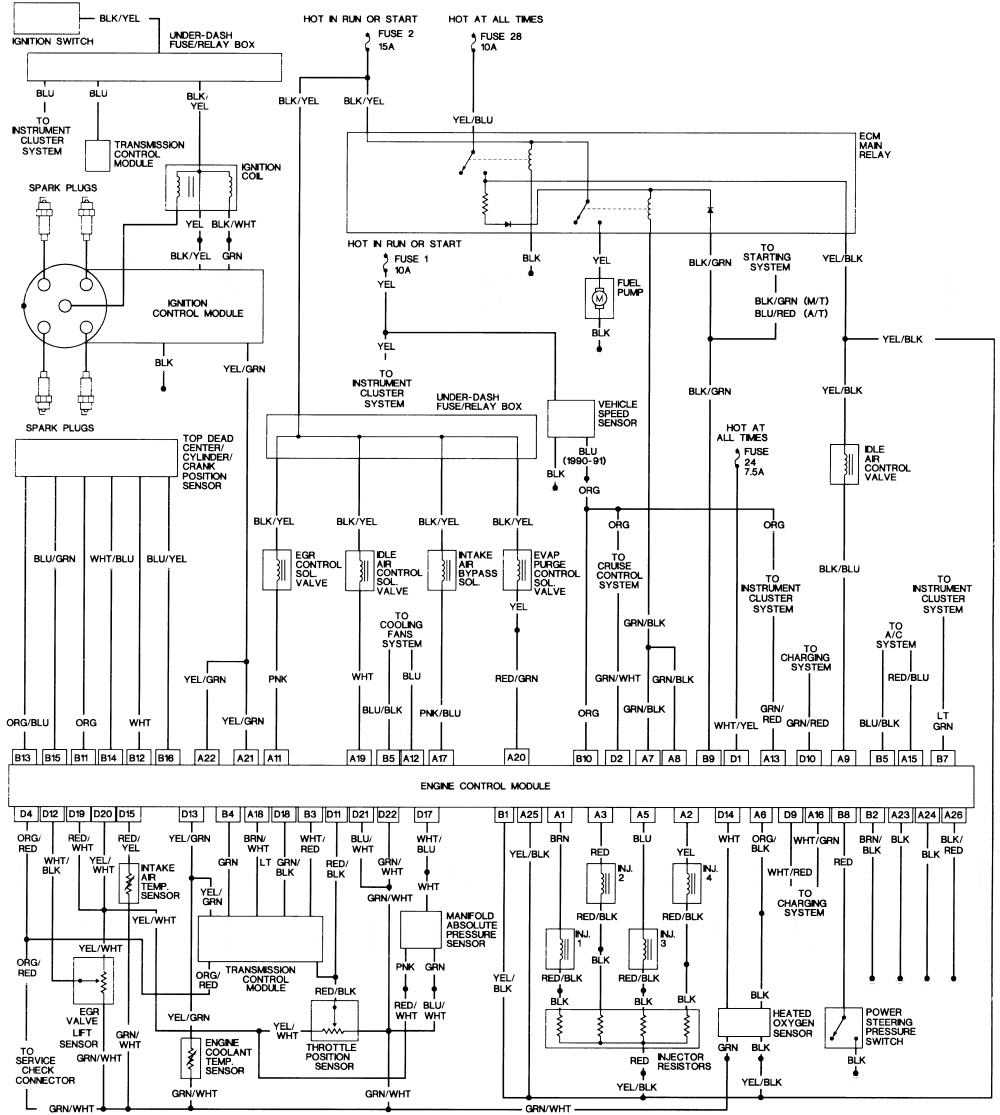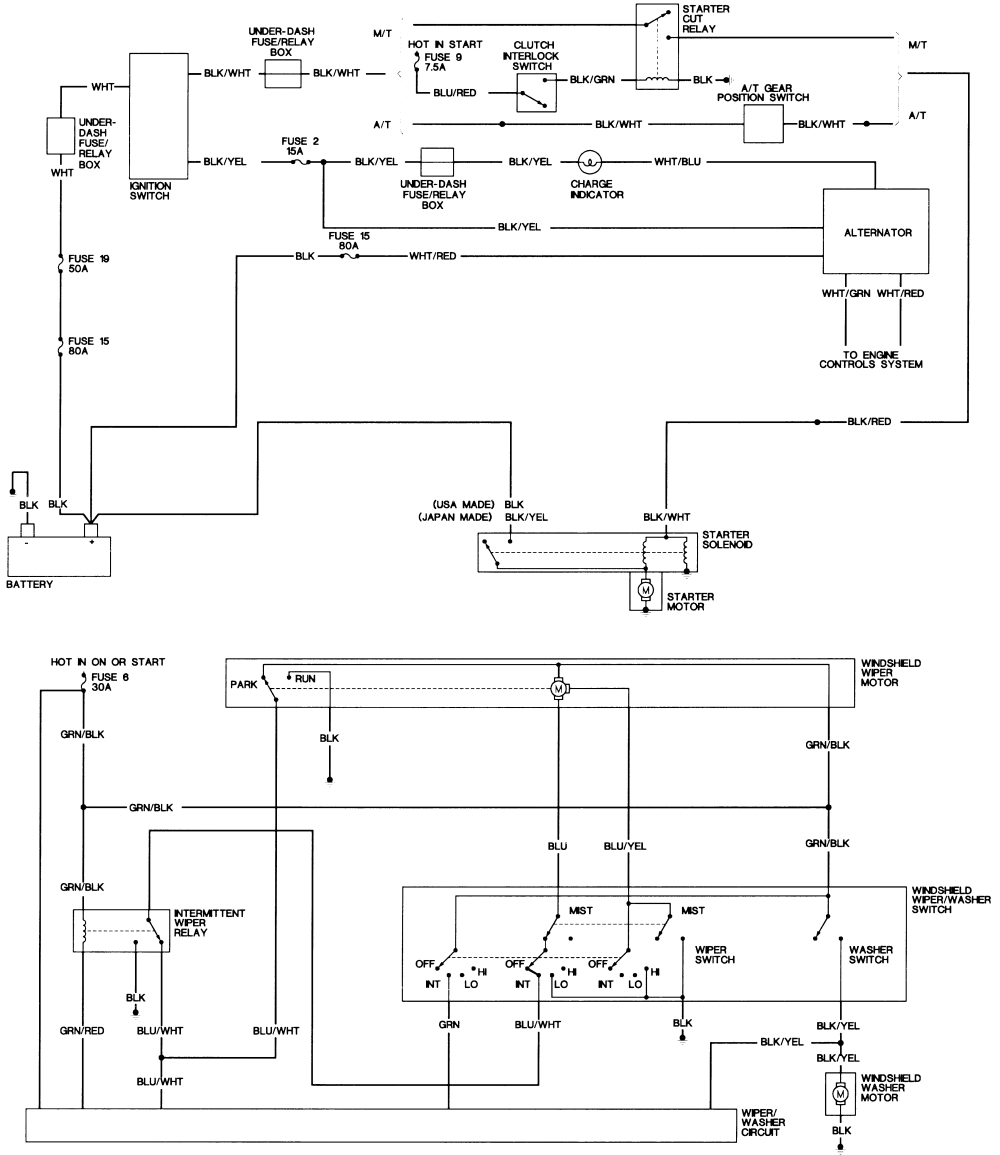- 2,833

- Colorado
- GTP_Cyborg
I've been trying to diagnose this issue for the past couple of weeks, and it's really starting to suck not being able to drive. Hopefully someone here can help me out?
1992 Accord LX
JDM H22A w/P13 ECU
Accord automatic transmission w/P19 TCU
My problem has been that the car will drive for a while, then the engine will shut off and leave me with a blown ECU fuse (under-hood 10A). Otherwise the engine swap has ran seemingly perfect in the year that it's been in.
The first time this happened the main relay and fuel pump were unplugged (thought maybe it was a simple failure of one of them), then after the car sat for a bit it started up and I was able to make it home.
The second time it died on me I tried doing the same things but with no luck, so the car was towed home. I tested the main relay (which was re-soldered for the second time in its life; I know these were problematic so I figured 'why not?'), fuel pump, ECU, and fuel injector resistor box. Couldn't find any problems, and yet with all this unplugging of things and the car sitting, it eventually fired back up. Though wierdly it was the injector resistor box that was looked at before the fuse stopped popping and the engine was able to start. I had been using the one that came with the H22, but I still had my old Accord unit laying around and decided to swap it out just in case.
Then it died a third time. The car can make short trips, but going for long drives seems to do it in. Maybe something's warming up to 'optimal failure temperature' or something.
Using a DMM, everything in the ECU fuse's circuit checked out fine except for the plug going into the IACV. Main relay, injector resistors, injectors, O2 sensor... all good (I might be forgetting something at the moment but it was all looked over). Battery voltage is supposed to be dropped across that harness plug (the valve itself tested fine according to what Haynes said to test for). The plug was dropping 1v or something like that. No continuity with ground was seen on either side of the plug (OL on the DMM). Am I wrong for thinking the ECU looked to be the culprit here?
So I just replaced the ECU and a few things have changed. That IACV plug has gone from dropping just the 1 volt to now 7 volts. Trouble codes have gone from no CEL codes and four TCU codes, to a solid CEL and code 14 from the D4 light. I don't remember the old TCU codes off hand, but I'm pretty sure 14 was one of them; it's for a line pressure control solenoid. I haven't driven the car yet, I'm afraid this mysterious short might steadily fry this newer ECU I paid dearly for (were OBD1 H22A1s just not available in America with automatics or what?). But I did let it idle in the driveway until the engine warmed up. I've got solid engine mounts, so it's hard to tell if the engine's running rough or not - vibrations are very normal for me.
To do tomorrow: It looks like my aim now is to find this line pressure control solenoid and test it. But I have no idea what it even looks like. Researching around the internet for a bit, I'll also check to confirm I'm getting battery voltage at pins A25 and B1 (power to IACV), 02 sensor, and the injector resistor box. I do have a new fuel pump I'll install, the one in there now is sounding like an old radio with the way its whine fluctuates.
1992 Accord LX
JDM H22A w/P13 ECU
Accord automatic transmission w/P19 TCU
My problem has been that the car will drive for a while, then the engine will shut off and leave me with a blown ECU fuse (under-hood 10A). Otherwise the engine swap has ran seemingly perfect in the year that it's been in.
The first time this happened the main relay and fuel pump were unplugged (thought maybe it was a simple failure of one of them), then after the car sat for a bit it started up and I was able to make it home.
The second time it died on me I tried doing the same things but with no luck, so the car was towed home. I tested the main relay (which was re-soldered for the second time in its life; I know these were problematic so I figured 'why not?'), fuel pump, ECU, and fuel injector resistor box. Couldn't find any problems, and yet with all this unplugging of things and the car sitting, it eventually fired back up. Though wierdly it was the injector resistor box that was looked at before the fuse stopped popping and the engine was able to start. I had been using the one that came with the H22, but I still had my old Accord unit laying around and decided to swap it out just in case.
Then it died a third time. The car can make short trips, but going for long drives seems to do it in. Maybe something's warming up to 'optimal failure temperature' or something.
Using a DMM, everything in the ECU fuse's circuit checked out fine except for the plug going into the IACV. Main relay, injector resistors, injectors, O2 sensor... all good (I might be forgetting something at the moment but it was all looked over). Battery voltage is supposed to be dropped across that harness plug (the valve itself tested fine according to what Haynes said to test for). The plug was dropping 1v or something like that. No continuity with ground was seen on either side of the plug (OL on the DMM). Am I wrong for thinking the ECU looked to be the culprit here?
So I just replaced the ECU and a few things have changed. That IACV plug has gone from dropping just the 1 volt to now 7 volts. Trouble codes have gone from no CEL codes and four TCU codes, to a solid CEL and code 14 from the D4 light. I don't remember the old TCU codes off hand, but I'm pretty sure 14 was one of them; it's for a line pressure control solenoid. I haven't driven the car yet, I'm afraid this mysterious short might steadily fry this newer ECU I paid dearly for (were OBD1 H22A1s just not available in America with automatics or what?). But I did let it idle in the driveway until the engine warmed up. I've got solid engine mounts, so it's hard to tell if the engine's running rough or not - vibrations are very normal for me.
To do tomorrow: It looks like my aim now is to find this line pressure control solenoid and test it. But I have no idea what it even looks like. Researching around the internet for a bit, I'll also check to confirm I'm getting battery voltage at pins A25 and B1 (power to IACV), 02 sensor, and the injector resistor box. I do have a new fuel pump I'll install, the one in there now is sounding like an old radio with the way its whine fluctuates.





